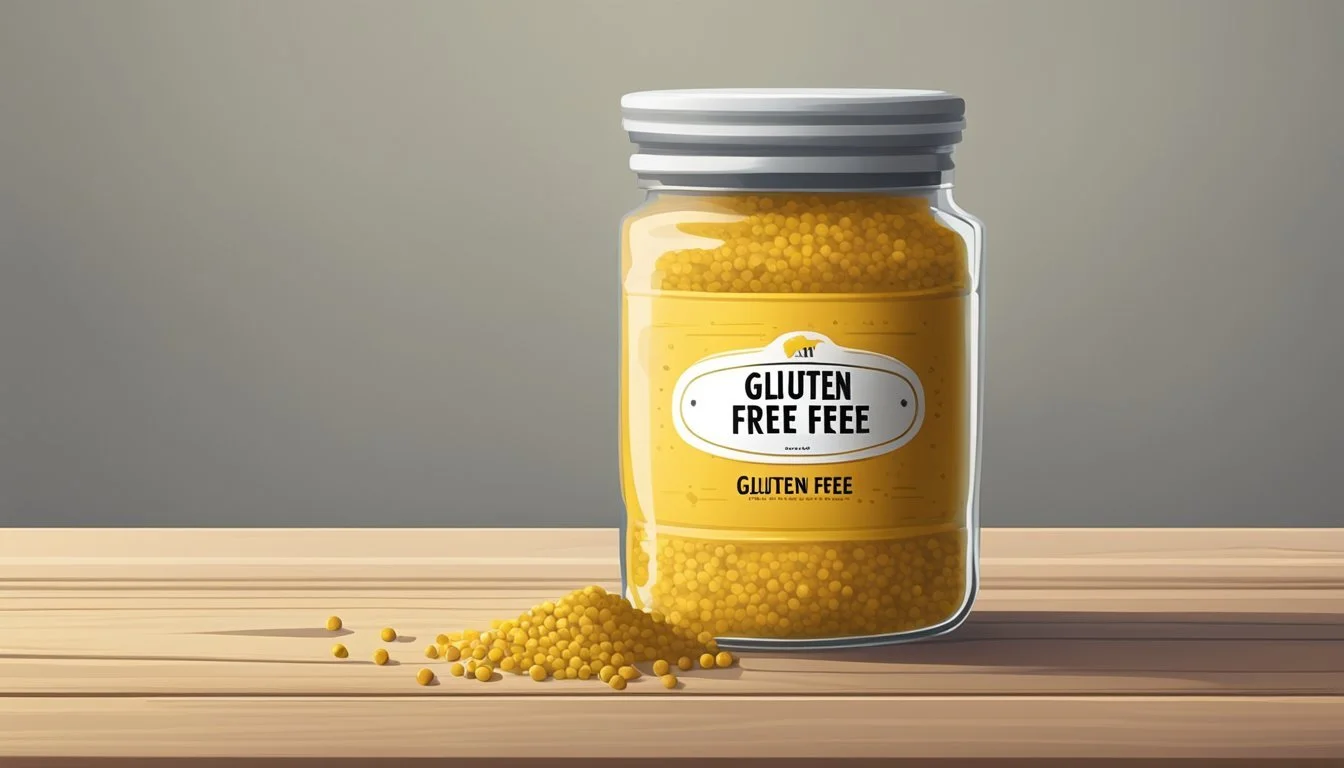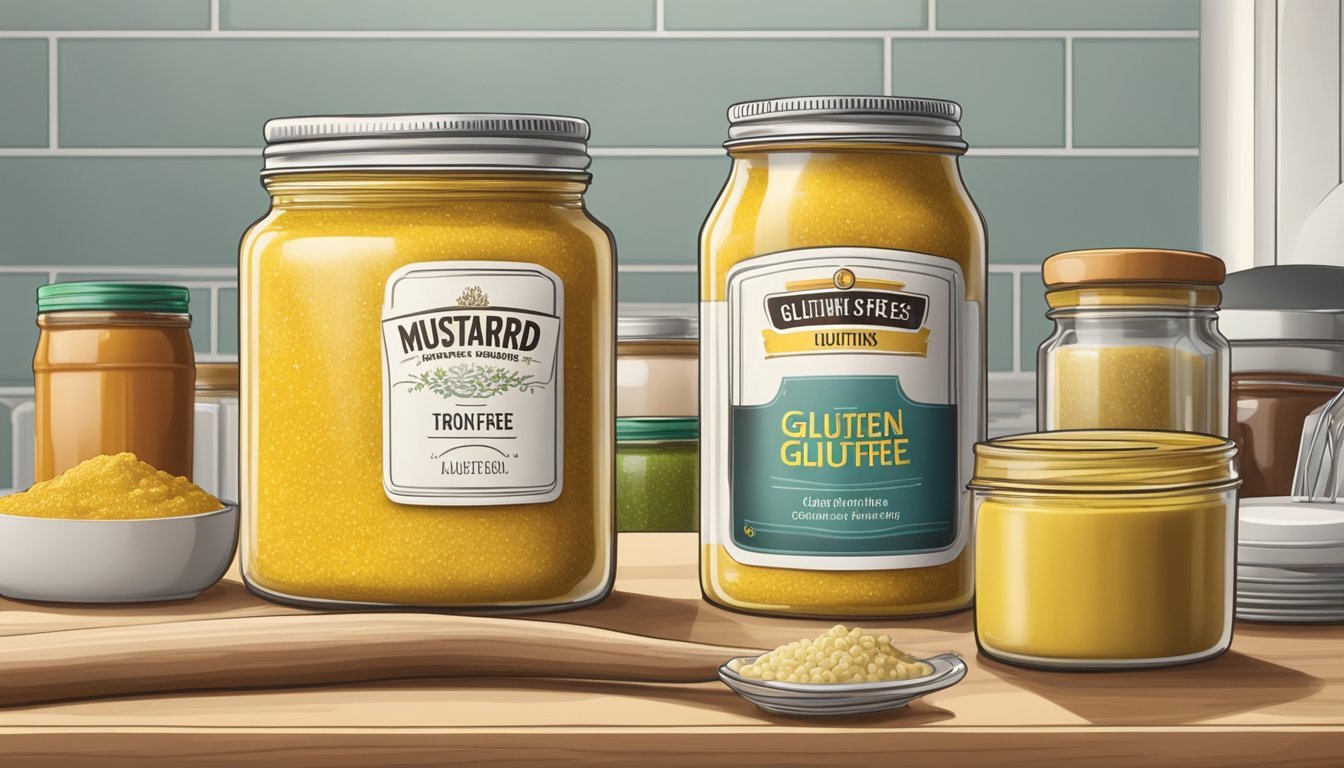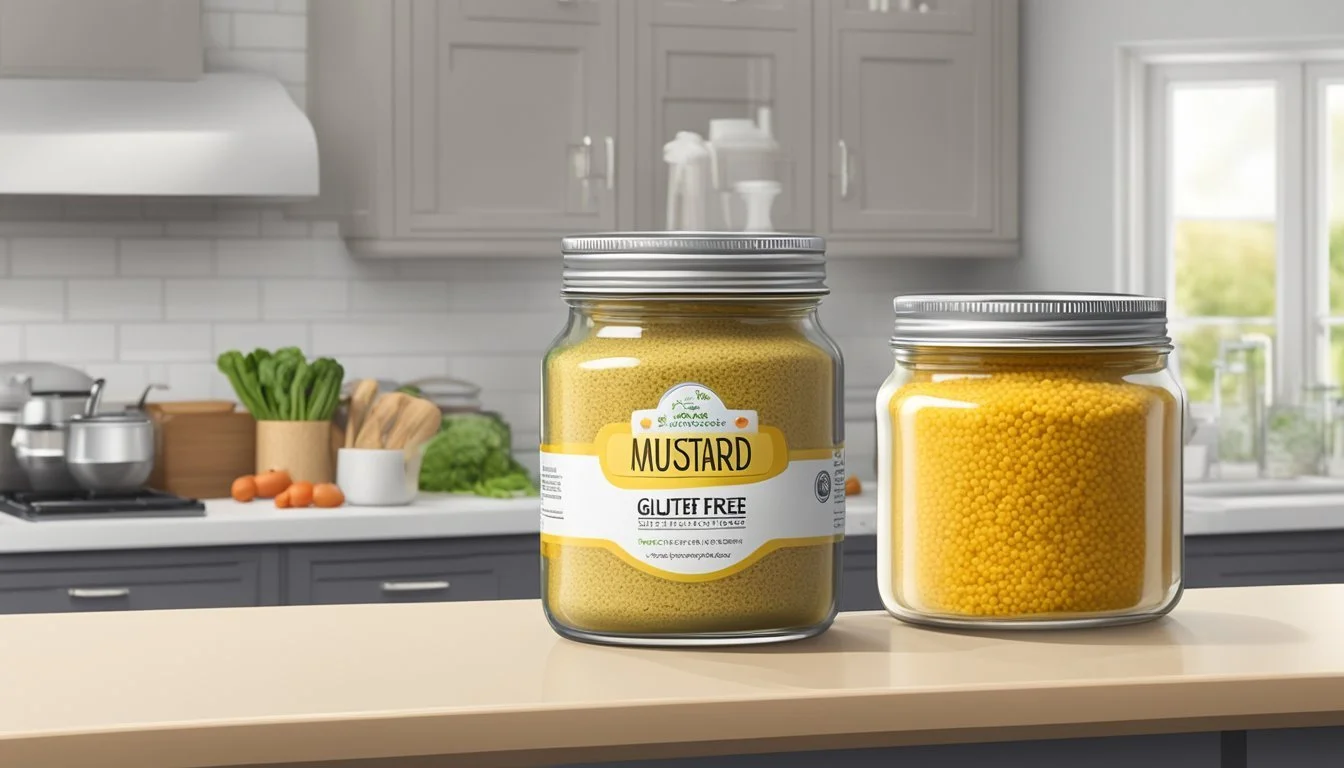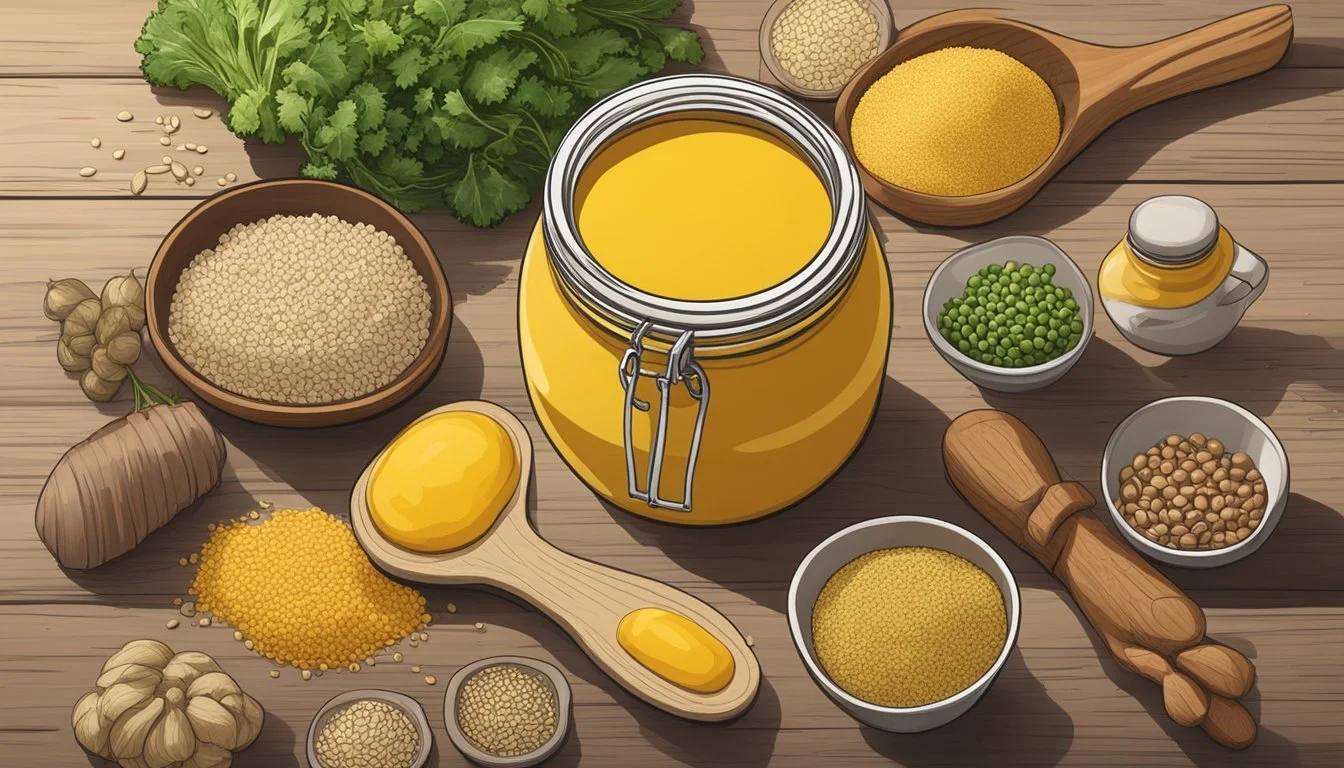Is Mustard Gluten-Free?
Understanding Its Ingredients and Production
Mustard is a condiment beloved worldwide, known for its tangy flavor and the zest it lends to a variety of dishes. While mustard in its simplest form is usually made of mustard seeds, water, vinegar, and sometimes spices, the gluten-free status can be more complex. Those with celiac disease or gluten sensitivity will find that while pure mustard is typically safe, potential gluten-containing additives used in certain mustard products may pose a risk.
A key consideration for those following a gluten-free diet is the vinegar used in mustard. Most brands use distilled vinegar, which is gluten-free even when derived from gluten grains due to the distillation process. However, malt vinegar is an exception, as it contains gluten from barley malt which isn't removed during production, and could thereby contaminate mustard products using it as an ingredient.
It's evident that the majority of mustards, including classic yellow, Dijon, and honey mustard, can be regarded as gluten-free, particularly if they are labeled as such or certified by a gluten-free organization. Nonetheless, it is always prudent for individuals with gluten intolerances to scrutinize labels for hidden gluten or to reach out to manufacturers for confirmation on the gluten-free status of their offerings. This attention to detail ensures the safety and enjoyment of mustard without the concerns of gluten exposure.
What is Gluten?
Gluten is a group of proteins found in certain grains that can cause health issues for individuals with celiac disease or gluten sensitivity. Its presence in foods is a major consideration for those who must adhere to a gluten-free diet.
Understanding Gluten
Gluten consists of two primary proteins: glutenin and gliadin. These proteins are responsible for the elasticity and structure of dough, allowing it to rise and maintain its shape. For most people, consuming gluten is harmless. However, for individuals with celiac disease or non-celiac gluten sensitivity, it triggers an immune response that can damage the lining of the small intestine, leading to digestive problems and nutrient deficiencies.
Gluten-Containing Grains
The primary sources of gluten are three cereal grains:
Wheat: A grain commonly used in bread, pasta, cereals, and baked goods.
Barley: Found in malt, food coloring, soups, and beer.
Rye: Typically used in rye bread, rye beer, and some cereals.
A gluten-free diet excludes all products containing these grains and derivatives of these grains. This is essential for managing symptoms and preventing complications associated with celiac disease and gluten sensitivity.
Overview of Mustard Varieties
Mustard is a condiment created from the seeds of the mustard plant, and its varieties range widely in flavor, color, and complexity. They can vary from mild and tangy to spicy and robust.
Yellow Mustard
Yellow mustard, often considered the classic American mustard, is known for its bright yellow color and mild taste. It's made from white mustard seeds mixed with vinegar and spices. The tangy flavor of yellow mustard makes it a favorite for hot dogs and sandwiches.
Dijon Mustard
Originating from Dijon, France, Dijon mustard is a pale, yellowish-brown mustard with a sharp and strong flavor, derived from black mustard seeds and white wine or a mix of water and acidic juice. It's commonly used in dressings and as a marinade due to its creamy consistency and rich taste.
Honey Mustard
Honey mustard blends the sweetness of honey with the tangy taste of mustard, often milder in spice. This mustard is a popular choice for dipping sauces and salads, balancing its sweetness with the sharp flavor of mustard seeds.
Brown Mustard
Brown mustard, or spicy brown mustard, is made with brown mustard seeds that have a more pungent flavor than yellow mustard seeds. This variety often includes a higher concentration of mustard seeds, giving it a spicier profile, which is well-suited for deli meats and sausages.
Other Mustard Types
There are numerous other mustard types, each with unique characteristics. Varieties like whole grain mustard, which contains partially ground mustard seeds, offer a rustic texture, while others may incorporate a range of flavors and spices, such as horseradish or herbs, to create gourmet blends that complement a variety of dishes.
Ingredients in Mustard
When it comes to mustard, its ingredients can vary across brands and types. It's essential to understand what goes into mustard to determine if it's gluten-free.
Common Ingredients
The typical ingredients in mustard include:
Mustard seeds: The base of any mustard, providing the characteristic flavor.
Water: Used to create the desired consistency.
Vinegar: Often added for tanginess; can be gluten-free, depending on the source.
Salt: Enhances the flavor.
Spices: A blend of various spices can be added for different flavors; common ones include turmeric and paprika.
Additionally, some mustards may contain sweeteners, thickening agents, or preservatives, which can affect not only flavor but also the gluten content of the product.
Potential Gluten Sources
In mustard, the main concern for gluten comes from the type of vinegar used or added flavorings, such as:
Malt vinegar: Derived from barley and not gluten-free.
Flavorings: Some mustards may include additives like beer or wheat flour that contain gluten.
It is recommended to always check the label for certification from organizations like the Gluten-Free Certification Organization, which require testing to below 10 parts per million of gluten. Moreover, distilled vinegars, commonly made from corn or beets, are generally considered safe for those requiring gluten-free options.
Examining Mustard Labels
When purchasing mustard, it is essential to carefully examine the product labels for gluten-free declarations and certification marks to ensure they meet gluten-free standards.
Identifying Gluten-Free Labels
Consumers should look for clear indications on mustard labels that identify the product as gluten-free. These indications are usually found on the front packaging and may be stated as "gluten-free" or "free from gluten." Brands may vary in how they label their products; however, some common labels for gluten-free mustard include French's Classic Yellow Mustard and Sir Kensington's Mustard. It's important for consumers to read labels every time they purchase products because formulations can change.
Understanding Certification Marks
Certification marks are additional assurances that a product has been tested and meets specific gluten-free standards. Two key marks to look for are:
The Gluten-Free Certification Organization (GFCO) Mark: Signifies testing to below 10 parts per million of gluten.
Certified Gluten-Free: Indicates the product has undergone rigorous testing to confirm it's safe for those with gluten sensitivities.
Products such as Organicville's mustards carry the GFCO's certification mark, offering a higher level of trust for consumers. Alongside the certification marks, consumers may find an allergen statement that details the potential of cross-contamination, giving further insight into the safety of the product for those with celiac disease or gluten intolerance.
Risks of Gluten Contamination
When exploring the gluten content in mustard, it's essential to be aware of the risks of gluten contamination, which can occur at various stages from production to preparation. Two primary concerns are cross-contamination and manufacturing processes, both of which can contribute to the unintended presence of gluten.
Cross-Contamination Concerns
Cross-contamination occurs when gluten-free products come into contact with gluten-containing ingredients. In food service settings, this can happen if equipment like slicers are shared between gluten-containing and gluten-free foods without thorough cleaning. Proactive steps such as wiping down equipment and setting aside the first few slices can reduce the risk, but the possibility of cross-contamination remains, especially if gluten particles adhere to equipment or surfaces.
Key details:
Cross-contamination can occur in shared facilities or equipment.
Gluten particles can transfer to gluten-free products.
Risk can be minimized by dedicated protocols and cleaning procedures.
Manufacturing Processes
The manufacturing process of mustard is another potential point for gluten contamination. If the mustard is produced in a facility that also processes gluten-containing products, gluten may inadvertently be introduced into gluten-free mustard. For mustard to be considered safe for individuals with gluten intolerance or celiac disease, it should typically contain less than 20 parts per million of gluten. Comprehensive testing and dedicated production lines are critical to ensuring safety.
Manufacturing of gluten-free products may share facilities with gluten products.
Contamination can introduce more than 20 parts per million of gluten.
Testing for gluten content is necessary to verify safety.
Gluten-Free Mustard Brands
Navigating the world of condiments for those with gluten sensitivities requires careful attention to labels and certifications. Many mustard brands have recognized the need for gluten-free options and provide products that are safe for individuals with celiac disease or gluten intolerance.
Reputable Gluten-Free Mustard Brands
Annie's Naturals: They offer a range of gluten-free mustards, including Organic Honey Mustard, Organic Yellow Mustard, Organic Dijon Mustard, and Organic Horseradish Mustard, all certified to contain less than 20 parts per million of gluten.
Organicville: Their mustards are certified gluten-free by the Gluten-Free Certification Organization, which requires testing to below 10 parts per million of gluten.
French's: Known for their Classic Yellow Mustard, French's products are widely regarded as gluten-free, although it's always best to review labels for the most current information.
Boar's Head: They provide gluten-free options such as Honey Mustard and Yellow Mustard, ensuring a safe condiment choice for gluten-free consumers.
Koops': Features Spicy Brown Mustard among other varieties, suitable for those looking to avoid gluten in their diets.
Sir Kensington’s: Offers a selection of mustards that are considered gluten-free, including speciality flavors, aligning with the needs of gluten-sensitive individuals.
It is imperative to check labels as manufacturers can change their formulations. Look for certifications and statements that indicate the mustard is gluten-free, especially for people with high sensitivity or celiac disease.
Mustard in Recipes and Meals
In the culinary world, mustard is a versatile ingredient that enhances flavors and adds depth to numerous dishes. It serves not only as a condiment but also as a key component in a variety of recipes.
Gluten-Free Cooking with Mustard
When incorporating mustard into gluten-free cooking, it's essential to ensure the mustard used is certified gluten-free to avoid cross-contamination. Recipes often call for mustard to emulsify and add flavor to sauces and salad dressings. For instance, mustard can be whisked into a vinaigrette to add a zesty tang to salads. It can also be used as a marinade for proteins, giving dishes like chicken or pork a savory kick. Individuals can enjoy mustard in gluten-free dishes without hesitation, as many brands meet the required standards of being below 20 parts per million of gluten.
Sauces and Marinades: Mix mustard with herbs and spices to create sauces or marinades.
Salad Dressings: Combine with olive oil, vinegar, and seasoning for a simple dressing.
Pairings and Serving Suggestions
Mustard pairs well with a variety of foods, making it suitable for many dietary preferences including gluten-free. It is a classic topping for burgers, hot dogs, and sandwiches, elevating their taste with its pungent flavor. Mustard can also transform potato salad and sausage dishes with its distinct taste. Whether used as a condiment or incorporated into dips, it can provide a flavor boost to gluten-free hamburgers or act as an accompaniment to hot dogs. When serving, it’s helpful to offer a range of mustards, from mild yellow to spicy Dijon, to cater to diverse palates and dishes.
Burgers and Sandwiches: A smear on buns adds complexity to these staples.
Dips: Combine with yogurt or mayo for a flavorful dip.
Potato Salad: Stir into dressings for a traditional or novel flavor twist.
By utilizing gluten-free mustard, chefs and home cooks alike can safely include this condiment in their gluten-free recipes, ensuring that meals are not only safe to consume but also full of flavor.
Shopping for Gluten-Free Mustard
When searching for gluten-free mustard, consumers must focus on label scrutiny and utilize online resources to find suitable products. Identifying brands that certify their mustards as gluten-free can streamline the shopping process.
Reading Labels at the Store
In the grocery store aisle, consumers should examine labels for the gluten-free certification. Gluten-free mustards typically contain distilled vinegar from gluten-free sources such as corn or beets. Brands like Annie's Naturals offer multiple gluten-free options, including Organic Honey Mustard and Organic Yellow Mustard. Clear labeling, including the declaration of any distilled ingredients, can guide consumers toward safe choices.
Shoppers might encounter brands such as:
French's Classic Yellow Mustard & Dijon Mustard
Sir Kensington's Mustard
Boar's Head Honey Mustard & Yellow Mustard
Koops' Mustard
Each product should be vetted for a gluten-free label.
Online Shopping Options
Online marketplaces expand the availability of gluten-free products. Websites like Amazon and Thrive Market feature a variety of gluten-free mustards. These platforms allow users to filter search results by dietary preferences, making it simpler to locate gluten-free options.
Consumers can expect to find brands such as:
Eden Organic Brown Mustard: Certified gluten-free, made with organic apple cider vinegar.
Organicville: Certified by the Gluten-Free Certification Organization, ensuring testing to below 10 parts per million of gluten.
Purchasing through these sites provides access to detailed product descriptions and customer reviews, aiding in making informed choices.
Considerations for Special Diets
When choosing mustard for special diets, individuals must carefully consider product certifications and ingredient lists to ensure the product aligns with their dietary needs.
Non-Gluten Dietary Restrictions
For consumers with dietary restrictions beyond gluten sensitivity, a variety of factors come into play when selecting mustard. Brands like Organicville cater to multiple special diet considerations by offering products that are not only gluten-free but also non-GMO, kosher, and vegan. This attention to expansive dietary needs means that even those adhering to strict standards, such as a paleo diet, can often find suitable options.
The following list provides an at-a-glance view of common dietary certifications and their presence in mustard brands:
Organic: Mustard products with this label are produced without synthetic pesticides and chemicals, making them a preferable choice for individuals following organic diets.
Non-GMO: Mustards bearing a non-GMO label are verified to be free of genetically modified organisms, ensuring the natural genetic integrity of ingredients.
Kosher: Kosher-certified mustards have been produced in accordance with Jewish dietary laws, which many individuals of the Jewish faith may require.
Vegan: Vegan mustards do not contain any animal products or by-products, aligning with the vegan philosophy and dietary practice.
Paleo: While not commonly certified, paleo-friendly mustards would typically contain only ingredients permissible on a paleo diet, such as vinegar derived from fruits instead of grains.
Individuals with these dietary preferences should always verify product labels to ensure that they comply with their specific dietary guidelines. It's also advisable to contact manufacturers directly if there is any doubt regarding the suitability of a product for a particular diet.
Additional Information
The section explores the nutritional facts of mustard and looks at various mustard alternatives while sticking to the topic of gluten-free options.
Nutritional Facts
Mustards are usually enjoyed for their flavor with little concern for their nutritional impact. A typical serving of mustard is low in calories and contains negligible amounts of fat. As a condiment, it contributes minimal macro-nutrients, but it can be a source of a small amount of phosphorus. For example, a common brand's yellow mustard provides roughly:
Calories: 3 kcal
Total Fat: 0.2g
Phosphorus: 8mg
Gluten-free mustards are especially beneficial for those with celiac disease or gluten sensitivity, as they avoid complications that arise from gluten consumption. Vinegar, a usual ingredient in mustard, is gluten-free when distilled, even from wheat sources—as gluten does not vaporize with distillation.
Mustard Alternatives
In situations where mustard isn’t available or preferred, individuals might look for gluten-free alternatives that can provide a similar tang or spice to their dishes. Here are some common alternatives:
Ketchup: Often gluten-free, but it is advisable to check labels as some may contain gluten-containing additives.
Mayonnaise: Typically gluten-free, as it is made from eggs, oil, and vinegar. However, one must verify labels for any added gluten.
Salad Dressings: Many are gluten-free, but it’s essential to verify the ingredients list for gluten or wheat additives.
These alternatives also often serve as the base for more complex sauces and dressings, many of which can be made gluten-free with appropriate ingredient choices. When selecting salad dressings, ketchup, or mayonnaise, a consumer should always read labels carefully to ensure the absence of gluten, especially since cross-contamination can occur during manufacturing.
Conclusion
Mustard in its pure form is typically gluten-free. The basic components of mustard—mustard seeds, vinegar, water, and sometimes salt and spices—do not contain gluten. However, individuals following a gluten-free diet should exercise caution, as certain brands and types of mustard may include gluten through additives or cross-contamination during manufacturing.
It's important for consumers to:
Read labels carefully, looking for a gluten-free certification or a clear mention that the product is gluten-free.
Be cautious with flavored mustards, such as Dijon or honey mustard, which may include gluten-containing ingredients.
Contact manufacturers if uncertain about the product's gluten content or if there's potential for cross-contamination with gluten-containing foods.
For those who are particularly sensitive to gluten, or those with celiac disease, mustards that undergo testing to confirm they contain less than 20 parts per million of gluten can be considered safe options. Many reputable brands ensure their mustard products meet these strict guidelines.
In summary, for gluten-free mustard, one's best bet is to:
Opt for simple, unflavored mustard varieties
Seek out certifications on the label
Conduct due diligence if the label lacks clear gluten-related information
By doing so, people can often include mustard in their gluten-free diet with confidence.









